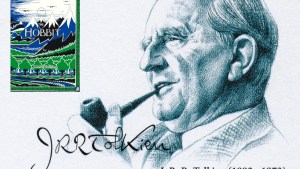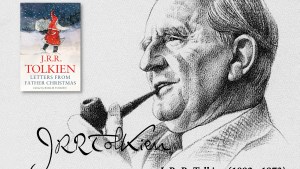Lenten Campaign 2025
This content is free of charge, as are all our articles.
Support us with a donation that is tax-deductible and enable us to continue to reach millions of readers.
The Lord of the Rings will be returning to movie theatres in early June. The epic trilogy of movies, produced and directed by Peter Jackson, was a box office phenomenon when the films were first released more than twenty years ago. They are amongst the most popular and successful films ever made. Many of the millions of those who have seen the films will be unaware that J. R. R. Tolkien, author of the epic on which the films are based, was a lifelong practicing Catholic, nor will they know that Tolkien insisted that The Lord of the Rings is “fundamentally religious and Catholic.”
The “fundamentally Catholic” dimension of The Lord of the Rings is not obvious. The story is set thousands of years before the birth of Christ. There is, therefore, no mention of anything specifically Christian. There is not even any direct reference to God. Since this is the case, how on earth or in heaven can The Lord of the Rings be Catholic in any sense?
The answer is to be found in the literary techniques that Tolkien employs to embed a fundamentally Catholic ethos within the story.
A clue in key dates
One very important technique is the use of liturgically significant dates to signify a connection with a Catholic understanding of the cosmos. It is a technique that Tolkien borrows from medieval works of literature, such as Dante’s Divine Comedy and the Arthurian romance, Sir Gawain and the Green Knight.
The Ring is destroyed on March 25, which is not merely the date of the Annunciation but also, according to tradition, the historical date on which Christ was crucified. The Annunciation is the date on which the Word becomes flesh, the date on which God becomes man, the date of the Incarnation. The Crucifixion is the moment when the Son of God dies for us so that the power of sin might be broken, and we might be redeemed. This monumentally crucial date is the date which Tolkien assigns to the destruction of the Ring, thereby connecting the Ring’s destruction with the Incarnation and the Crucifixion.
The power of the Ring is destroyed on the same date on which the power of sin is destroyed. Original Sin is the one sin to rule them all, and in the darkness bind them, just as the Ring is the One Ring to rule them all, and in the darkness bind them. The power of the One Sin and the power of the One Ring are both destroyed on the same hugely significant date. Incidentally, and equally significantly, Frodo Baggins leaves Rivendell on December 25, making his journey from Rivendell to Mount Doom (Golgotha) an allusion to the life of Christ from his birth to his death.

Wearing the Ring and bearing the Cross
If the Ring is synonymous with sin, we can see that the act of putting on the Ring is akin to the act of sin. The wearing of the Ring excommunicates the Ring-wearer from the world of light, making him invisible, but makes him more visible than ever to Sauron, the Dark Lord, and susceptible to the power of his demonic will.
Then again, if the wearing of the Ring is akin to the act of sin, the bearing of the Ring is carrying the weight of sin without sinning. The Ring-bearer is in some sense a cross bearer, which explains Tolkien’s connection of Frodo’s journey to Mount Doom with the way of the cross, the via dolorosa which leads to Golgotha, which is the real historical Mount Doom.
There are many other aspects of The Lord of the Rings which make it applicable to Christianity and to a Catholic understanding of reality but the date on which the Ring is destroyed is the one thing to connect them all, and in the light to guide them.
Tolkien knows The Lord of the Rings better than anyone. If he tells us that it is “fundamentally religious and Catholic,” then we’d better believe it. Whether or not those going to watch the movies in the theatres this summer are aware of it, they will be experiencing profoundly Catholic culture at its best.

Joseph Pearce is the author of Frodo’s Journey: Discovering the Hidden Meaning of The Lord of the Rings.



